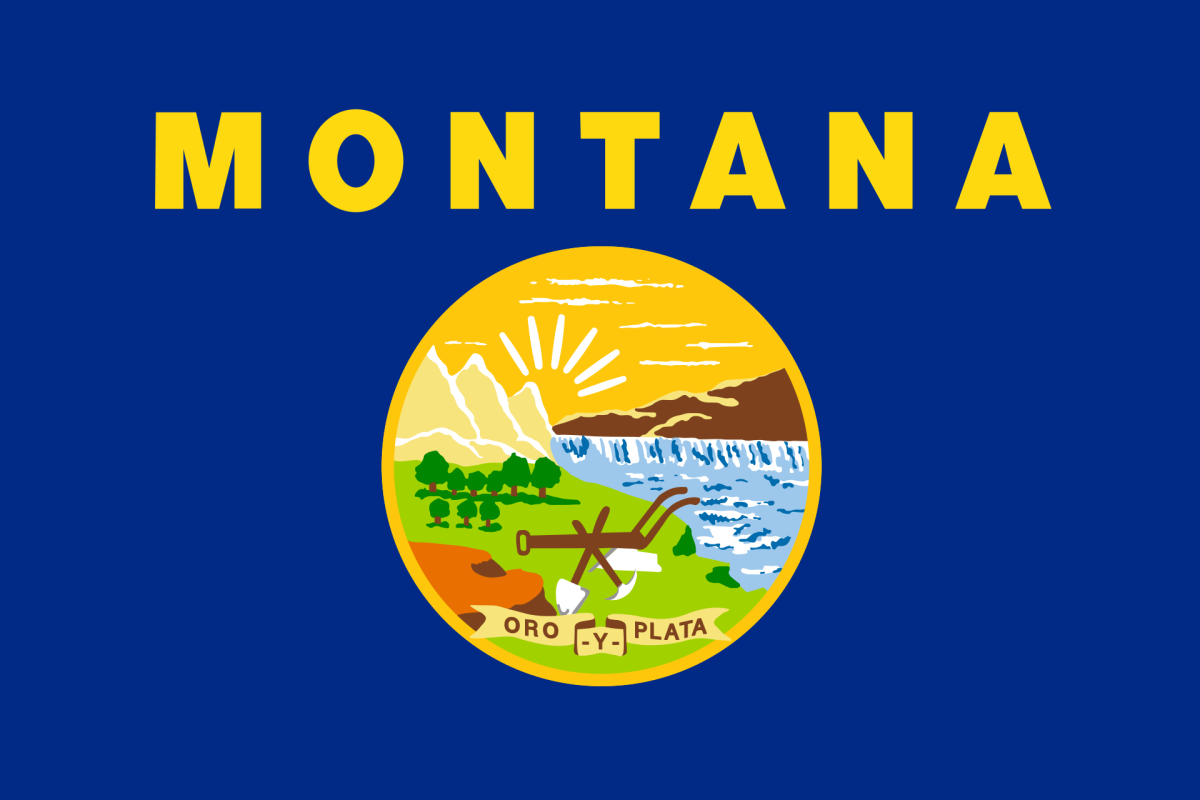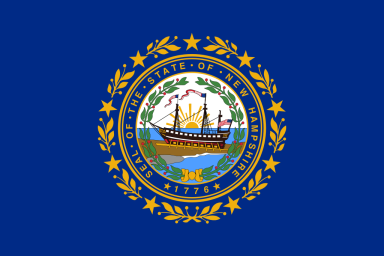Montana Workers’ Compensation Laws

Workers' compensation laws in Montana ensure that individuals who are injured on the job receive proper compensation. These laws also apply to occupational illnesses that develop over time. Montana passed the Workers' Compensation Act in 1915 and underwent a major reform in 1987. Since then, the Treasure State has made more revisions and bills. These changes aim to improve the workers' compensation system.
According to the Bureau of Labor Statistics, Montana ranks seventh among the states with the highest non-fatal occupational injuries. Furthermore, the Montana Department of Labor & Industry's 2022 Worker's Compensation Report identifies that sprains, tears, contusions, and lacerations are the most frequent types of injuries suffered by workers.
Montana saw an increase in reported injuries from 2020 to 2021. The number of cases rose from 21,021 to 22,165. Simultaneously, denials from insurers increased from 5,791 to 6,875. Thus, it becomes imperative for Montana workers to be aware of their rights under workers' compensation laws.
This article aims to offer support. It explains the benefits available to injured workers and provides guidance on the claiming process. If a claim is denied, it offers direction on the subsequent steps to take. Understanding one's rights can make challenging times more manageable.
Montana Workers’ Compensation Insurance Requirements
Workers' compensation insurance is required in Montana for all businesses with one or more employees. A policy can be obtained from any licensed provider or the Montana State Fund.
Residents and non-residents are eligible for workers' compensation if they work in the state. Section 39-71-118 of the Workers' Compensation Act defines the broad definition of workers covered by the law. Section 39-71-402 also includes coverage guidelines for employees who may be working out of state.
Employers who hire independent contractors must ensure they have an Exemption Certificate issued by the Montana Department of Labor and Industry. Employers who do not have this document may be held liable for any occupational illnesses or workplace injuries, regardless of their workers' contractor status. Other notable exemptions to workers’ compensation coverage include the following:
Sole proprietors, partners in partnerships, and corporate officers.
Commission-based salespeople, such as those working in the insurance and real estate industries.
Domestic workers.
Petroleum industry workers.
Truck drivers.
Ministers and other religious workers.
Professional athletes, specifically those engaged in contact sports.
Licensed barbers or cosmetologists who are affiliated with cosmetology firms.
Licensed jockeys and horse racing employees.
Not all injuries are covered by workers' compensation. Injuries from alcohol or drug use, fights at work, or self-harm may not be covered. For compensation, the injury needs to happen while working. If an accident occurs after work hours, it might not be covered.
Penalties
Employers who fail to secure a workers’ compensation policy will be subject to a $200 penalty, or twice the value of insurance premiums they should have paid within the past three years of non-insurance, whichever is higher.
Montana Workers’ Compensation Benefits
Montana's workers' compensation laws provide three main benefits for injured workers. These benefits will be discussed in the following sections:
Medical Benefits
Montana workers who qualify can get money for work injuries or illnesses. This compensation covers all related costs. The law covers the following medical expenses:
Ambulance transportation.
Surgical procedures.
Prescription medication.
Diagnostics such as MRI and CT scans, ultrasound, and blood testing.
Doctor visits and follow-up appointments.
Medical devices and adaptive equipment such as oxygen tanks and wheelchairs.
Physical rehabilitation and occupational therapy.
Travel expenses for long-distance treatments.
Workers who suffer a significant disfigurement to their head, neck, or face are eligible for compensation of up to $2,500. When it comes to prescription drugs, insurance companies only cover generic-name drugs. However, if a generic alternative is not available, they will reimburse for brand-name drugs.
Workers have the option to consult with their preferred physician for initial visits regarding their injuries. The insurance provider has the responsibility to approve the chosen medical provider. They can also designate another one if needed. The chosen medical provider facilitates the necessary treatment. Once a claim is submitted, the examiner may schedule a medical examination.
When providing workers' compensation-covered care, healthcare providers must adhere to the Montana Utilization and Treatment Guidelines. There are options available to people if the insurance company denies coverage for a treatment. They can refer to the guidelines or request a review by the Medical Director of Montana L&I.
Wage Loss Benefits
If an injury prevents an individual from working for an extended period of time or permanently changes the types of jobs that they can do, they may be eligible for wage loss benefits. Compensation for 20 to 25% of the attorney's fees is also included. The severity and nature of the injury determine the specific coverage of benefits, which are classified into different groups based on these factors.
Temporary Partial Disability
For workers recovering from work-related injuries and able to continue working in a diminished capacity, this provision applies. When an injury falls into this category, the wage loss benefits are based on the difference between previous and current wages. For instance, if the weekly wage were $1,000 but decreased to $750 due to reduced capacity, the Temporary Partial Disability (TPD) wage loss benefits would be $250 per week.
Workers can receive these benefits until they can work at full capacity and earn regular wages. However, the benefit amount in this category cannot surpass the rate designated for temporary total disability.
Temporary Total Disability
If a person is unable to return to work due to an injury, the benefits fall under this category. The state sets a maximum rate of $1,034 for these benefits, which is equal to two-thirds of the injured worker's gross wages at the time of the injury.
These benefits continue until the individual reaches maximum medical improvement (MMI) or returns to work. It should be noted that receiving Social Security disability benefits may result in a 50% reduction in compensation for this benefit.
Permanent Partial Disability
Employees who have sustained a permanent injury or illness as a result of a workplace accident or hazard but can still work in a limited capacity are eligible for Permanent Partial Disability (PPD) benefits. The duration of this benefit is up to 400 weeks, and the amount of compensation depends on various elements like the seriousness of the injuries and the total amount of lost earning capacity.
Following an injury, a physician will evaluate and assign an impairment rating. Workers become eligible for PPD benefits if their injury falls under Class 1 impairments and results in wage loss. On the other hand, people with Class 2 impairments are eligible for benefits regardless of any wage loss the injury may have caused.
Permanent Total Disability
This benefit is established when an individual reaches Maximum Medical Improvement (MMI) but is still unable to work due to their injuries. The compensation should be equal to two-thirds of their previous gross wages, and it can be continued until they reach the Social Security retirement age.
Workers are also entitled to a 3.25% annual cost-of-living increase in their benefit amount after 104 weeks of PTD payments.
Death Benefits
In the event of a work-related fatality, the deceased's dependents are entitled to workers' compensation death benefits, which are equal to two-thirds of the deceased's gross wages for a period of up to 500 weeks. The benefits are allocated as follows:
The deceased’s spouse and children receive full benefits.
In the absence of a spouse or child, dependent parents can receive benefits depending on how much they have been relying on the deceased for support. The same rules apply to a dependent sibling under 18 years old in the event that there is no dependent parent.
Nondependent parents can receive a lump sum of $3,000.
In addition to the support offered, those who have lost a loved one are eligible to receive compensation of up to $4,000, specifically allocated to cover funeral and burial expenses.
How to File a Workers’ Compensation Claim in Montana
Filing a workers' compensation claim while recovering from injuries can be difficult and time-consuming. The sections that follow aim to alleviate this difficulty by addressing common concerns that arise during the claim filing process. In addition, a step-by-step guide is provided to provide a clear and understandable pathway for workers navigating this procedure.
When Is the Deadline for Workers’ Compensation Claims in Montana?
Employees who are injured have 12 months to submit a claim. To document the claim, employees must write it down. Then, send it to the employer, insurer, or Montana Department of Labor and Industry. Furthermore, it is essential for the injured worker or their legal representative to provide a signature on the claim for proper processing and consideration.
Employers must initiate a claim with the insurance company within one year. When a worker gets fired or denied their claim, they have a two-year window to appeal the decision. The window starts from the date of termination or denial.
A Step-By-Step Guide on Filing a Workers’ Compensation Claim in Montana
1. Seek Immediate Medical Care.
Following a workplace accident, the primary step entails prioritizing the prevention of further injury by promptly seeking immediate medical attention. It is important not to dismiss an injury with the assumption that it will naturally heal, as doing so might increase the risk of claim rejection, particularly if the injury exacerbates over time.
When suspecting occupational illnesses, it is highly advisable to promptly seek a diagnosis upon the onset of symptoms. This swift action allows for an early initiation of the claim process and facilitates timely medical intervention. Such proactive measures can help prevent the progression or exacerbation of the medical condition, ensuring timely and appropriate treatment.
2. Report Injuries.
The reporting of workplace accidents and injuries has a crucial timeline of 30 days from the incident. This reporting can be communicated through various means, such as verbal communication, written documentation, or email correspondence. Ensuring the provision of detailed information is of paramount importance, as it significantly contributes to reinforcing the strength and validity of the claim.
3. File the First Report of Injury (FROI) Form.
When reporting injuries, workers must fulfill the requirement of completing the First Report of Injury Form and subsequently submit it to either their workers’ compensation insurance provider or directly to the Department of Labor and Industry. It is crucial to ensure the inclusion of the following essential details when filling out the form:
Personal information: This encompasses the individual's complete name, date of birth, Social Security number, and mailing address.
Employment information: This includes job title, employee type, and employee classification code.
Injury-related details: This comprises the date of injury occurrence, accident description, injury location, and affected body parts.
Date of employer notification: This indicates the date when the employer was informed about the injury.
Impact on work: Whether the injury led to missing work for more than four days.
Following the filing of the claim, there is a designated timeframe of 30 days within which the insurance company must deliberate and make a determination regarding the acceptance or rejection of the claim.
What Should One Do If a Workers’ Compensation Claim in Montana Has Been Denied?
A variety of factors may play a role in the denial of a workers' compensation claim in Montana. Missed deadlines or inaccuracies in submitted forms are examples of this. Furthermore, insurance companies may argue that the state's workers' compensation laws do not apply to the injury at hand. When faced with such circumstances, it may be necessary to seek the advice of an experienced workers' compensation attorney in order to navigate the appeals process successfully.
To contest a denied workers’ compensation claim, workers need to contact the Mediation Division of the Montana DL&I. They will receive comprehensive guidance on initiating mediation, a process that incurs no cost. It is essential to understand that while the mediator provides suggestions, these are not legally binding, and the insurance adjuster maintains the authority to reject these recommendations. If mediation fails to yield an agreement, the subsequent course of action involves initiating a claim with the Workers’ Compensation Court.
Legal Resources for Injured Workers in Montana
Managing the legal procedures while recovering from injuries can be a challenging process that can present significant obstacles. Workers can be directed toward the necessary support and assistance they may require by using the following resources, which are outlined below. These resources serve as valuable tools that streamline the process.
Montana Law Help
The Montana Legal Services Association is in charge of managing Montana Law Help, which offers legal assistance to those with low to moderate incomes. This comprehensive resource addresses a wide range of civil and employment matters, including workers' compensation, unemployment benefits, and veterans' issues. Individuals can easily access an online application to determine their eligibility. They can also seek advice and assistance by calling the Helpline at 1-800-666-6899, which is open from Tuesday to Thursday, spanning from 9:00 a.m. to 1:00 p.m.
State Bar of Montana
The State Bar of Montana serves the public by providing crucial legal resources, granting access to the state law library, and facilitating connections with attorneys who specialize in resolving workers’ compensation disputes. Additionally, it offers valuable guidance to individuals who choose to represent themselves in court proceedings. For those seeking assistance or information, reaching out to the State Bar of Montana is possible by contacting them via phone at (406) 442-7660 or through email at mailbox@montanabar.org.
Montana Department of Labor & Industry
The Employment Standards Division, housed within the Montana Department of Labor & Industry, provides an extensive array of resources specifically designed to assist workers affected by injuries. These resources, accessible via their website, encompass critical features such as coverage verification, downloadable forms essential for the claims process, and dedicated dispute resolution services. To engage with the division, workers can reach out by dialing (406) 444-6543 or opt for an in-person visit to their office situated at 301 South Park Avenue, Floor 5, Helena, MT 590601.
Expertise.com StaffAuthor
Step into the world of Expertise.com, your go-to hub for credible insights. We don't take accuracy lightly around here. Our squad of expert reviewers, each a maestro in their field, has given the green light to every single article you'll find. From rigorous fact-checking to meticulous evaluations of service providers, we've got it all covered. So feel free to dive in and explore. The information you'll uncover has been stamped with the seal of approval by our top-notch experts.




